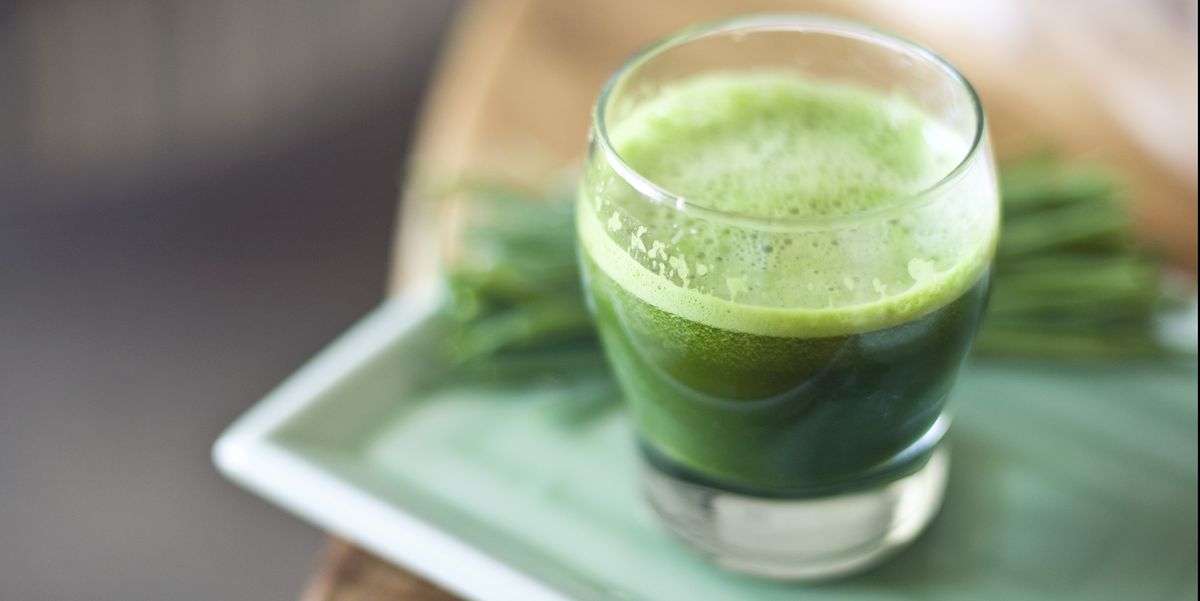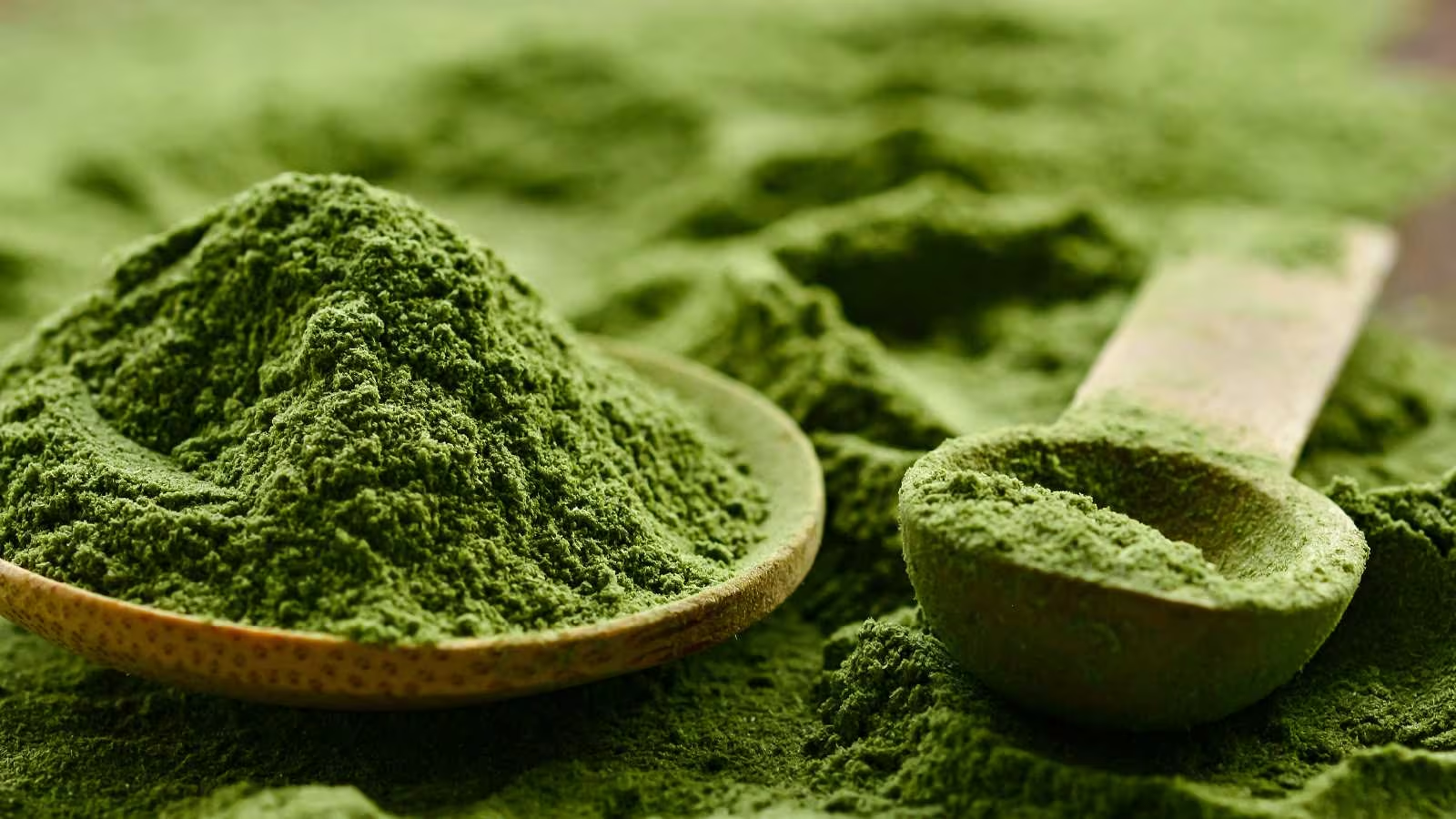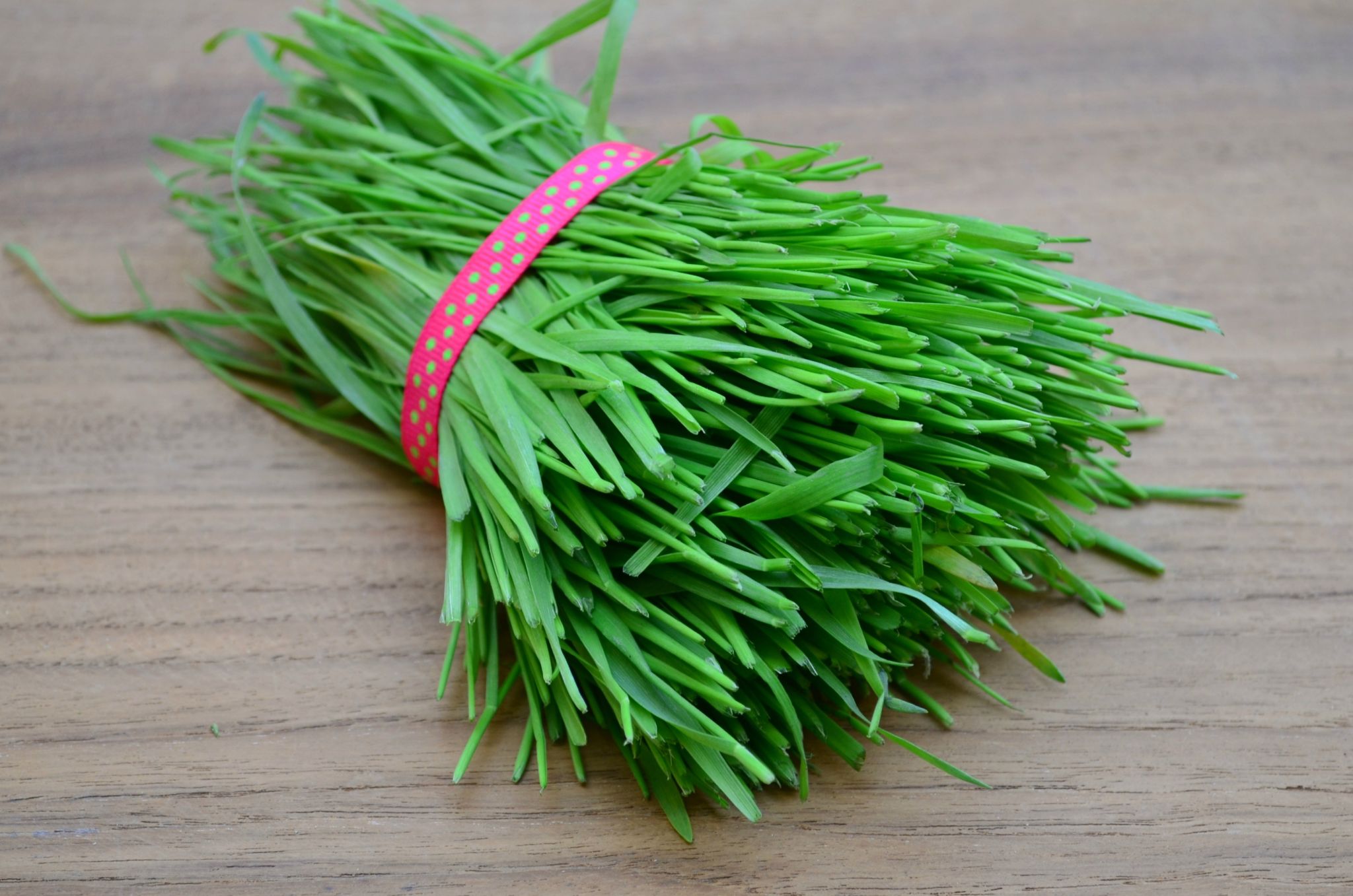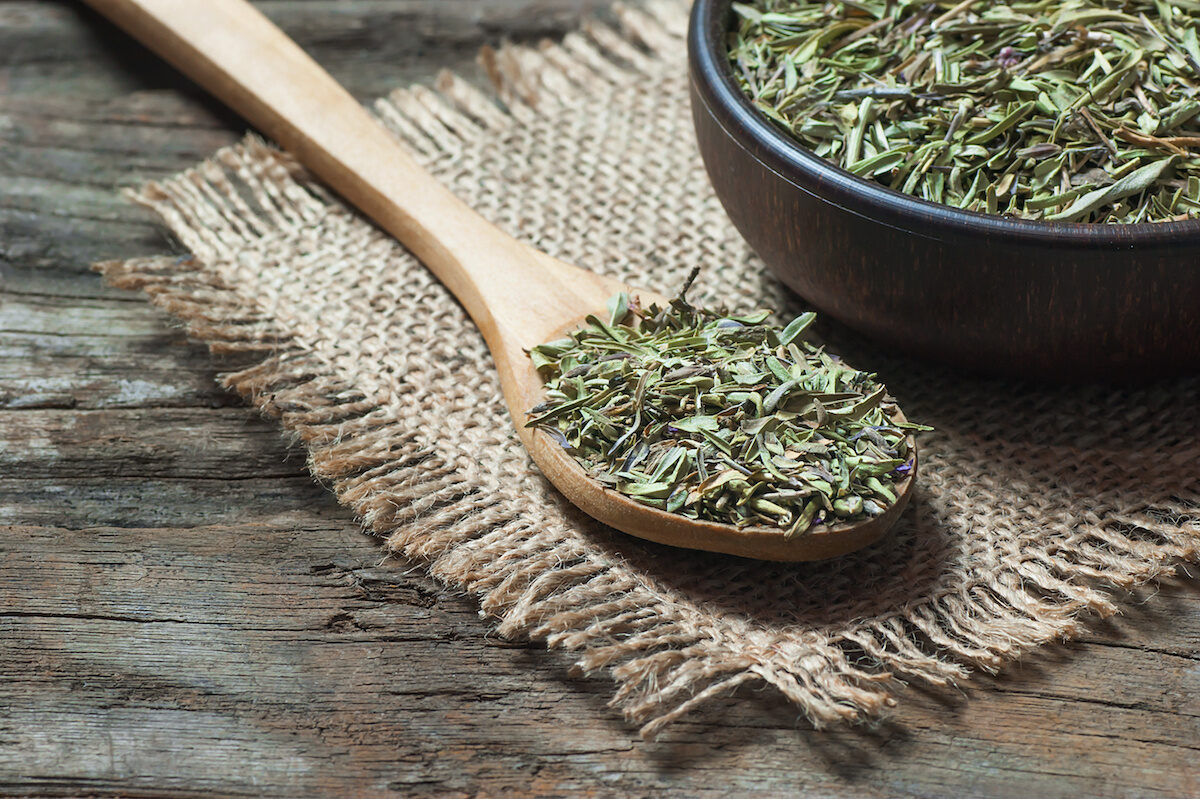Home>Gardening & Outdoor>Landscaping Ideas>What Happens If You Drink Too Much Wheatgrass


Landscaping Ideas
What Happens If You Drink Too Much Wheatgrass
Published: January 26, 2024
Discover the effects of excessive wheatgrass consumption and how it can impact your health. Learn about potential risks and precautions. Explore more landscaping ideas.
(Many of the links in this article redirect to a specific reviewed product. Your purchase of these products through affiliate links helps to generate commission for Storables.com, at no extra cost. Learn more)
**
Introduction
**
Are you considering adding wheatgrass to your daily routine in pursuit of a healthier lifestyle? While wheatgrass is celebrated for its potential health benefits, it's essential to understand the implications of consuming it in excess. In this comprehensive guide, we'll delve into the world of wheatgrass, exploring its nutritional composition, potential benefits, and the risks associated with overindulgence. Moreover, we'll shed light on the symptoms of overconsumption and the appropriate measures to address this issue. By the end of this journey, you'll be equipped with the knowledge needed to make informed decisions about incorporating wheatgrass into your diet. Let's embark on this enlightening exploration to uncover the truth about the effects of excessive wheatgrass consumption.
Key Takeaways:
- Wheatgrass offers potential health benefits due to its rich nutrient profile, but overconsumption can lead to digestive discomfort and allergic reactions. Moderation and awareness of individual tolerances are crucial for reaping its benefits.
- Symptoms of overconsumption of wheatgrass include digestive issues, hypersensitivity reactions, and potential nutrient imbalances. Seeking guidance from healthcare professionals and adjusting intake can help address these effects.
Read more: What Happens If You Water Grass Too Much
What Is Wheatgrass?
Wheatgrass, scientifically known as Triticum aestivum, is the young grass of the common wheat plant. It is renowned for its vibrant green hue and is typically consumed as a fresh juice or in powdered form. This superfood has gained popularity for its rich nutrient profile, containing an array of vitamins, minerals, and active enzymes.
Wheatgrass has a long history dating back to ancient civilizations, where it was revered for its medicinal properties. In contemporary times, it has become a staple in the realm of holistic health and nutrition. The grass is usually harvested when it reaches its nutritional peak, which occurs at a height of 7 to 10 inches. At this stage, it is brimming with essential nutrients that proponents claim can offer a myriad of health benefits.
One of the defining characteristics of wheatgrass is its high chlorophyll content. Chlorophyll, the pigment that gives plants their green color, is often hailed for its potential detoxifying properties and ability to support overall wellness. Additionally, wheatgrass is a source of vitamins A, C, and E, as well as minerals such as iron, magnesium, and calcium. Furthermore, it contains amino acids, the building blocks of proteins, which are vital for various physiological functions.
Wheatgrass can be consumed in different forms, including fresh juice, freeze-dried powder, or tablets. Many health enthusiasts incorporate it into their daily regimen, often as a component of smoothies or wellness shots. Its versatility and purported health benefits have contributed to its widespread appeal in the realm of natural health and wellness.
Nutritional Content of Wheatgrass
Wheatgrass is celebrated for its rich nutritional profile, boasting an array of essential vitamins, minerals, and enzymes that are believed to offer various health benefits. This vibrant green superfood is a powerhouse of nutrients, making it a popular choice for those seeking to enhance their overall well-being.
One of the key components of wheatgrass is chlorophyll, the pigment responsible for its intense green color. Chlorophyll is often touted for its potential detoxifying properties and its ability to support the body’s natural cleansing processes. Additionally, wheatgrass is a good source of vitamins A, C, and E, which are renowned for their antioxidant properties, helping to combat oxidative stress and bolster the immune system.
Furthermore, wheatgrass contains an array of essential minerals, including iron, magnesium, calcium, and potassium. These minerals play crucial roles in various bodily functions, such as oxygen transport, muscle contraction, and bone health. The presence of these minerals in wheatgrass makes it a valuable addition to a balanced diet.
In addition to vitamins and minerals, wheatgrass is also rich in enzymes that are believed to support digestion and nutrient absorption. Enzymes are essential for breaking down food and facilitating the release of nutrients for the body to utilize. By incorporating wheatgrass into one’s diet, individuals may potentially support their digestive processes and overall nutritional uptake.
Moreover, wheatgrass is a source of amino acids, the building blocks of proteins. These amino acids are crucial for the synthesis of proteins, which are integral to numerous physiological functions, including muscle repair and immune support. The presence of amino acids in wheatgrass further contributes to its nutritional value and potential health benefits.
Whether consumed as a fresh juice, in powdered form, or as a dietary supplement, wheatgrass offers a concentrated dose of essential nutrients that may complement a balanced diet and support overall wellness. As with any dietary component, moderation and understanding individual nutritional needs are key factors in reaping the potential benefits of wheatgrass.
Potential Benefits of Wheatgrass
Wheatgrass has garnered attention for its potential health benefits, which have contributed to its popularity as a dietary supplement and wellness aid. While individual experiences may vary, proponents of wheatgrass advocate for its diverse range of potential advantages that may positively impact overall well-being.
One of the most celebrated attributes of wheatgrass is its high chlorophyll content. Chlorophyll, the green pigment found in plants, is believed to possess detoxifying properties that may aid in the body’s natural cleansing processes. Advocates of wheatgrass suggest that regular consumption of this superfood may support detoxification and promote a healthy internal environment.
Additionally, wheatgrass is rich in vitamins A, C, and E, all of which are known for their antioxidant properties. Antioxidants play a crucial role in combating oxidative stress and neutralizing free radicals, potentially contributing to cellular health and overall immune function. The presence of these vitamins in wheatgrass has led to claims of potential immune-boosting effects.
Furthermore, the enzymes present in wheatgrass are believed to support digestion and enhance nutrient absorption. By aiding in the breakdown of food and facilitating the release of nutrients, these enzymes may contribute to improved digestive function and overall nutritional uptake. This aspect of wheatgrass has led to its inclusion in various dietary regimens aimed at promoting digestive wellness.
Moreover, the amino acids found in wheatgrass are essential for protein synthesis and various physiological processes. These amino acids are the building blocks of proteins, which are integral to muscle repair, immune support, and overall cellular function. As a result, proponents of wheatgrass often highlight its potential role in supporting muscle recovery and immune health.
It’s important to note that while wheatgrass offers a range of potential benefits, individual responses to its consumption may vary. As with any dietary supplement, it’s advisable to consult with a healthcare professional before incorporating wheatgrass into one’s routine, especially for individuals with specific health concerns or dietary restrictions. Understanding the potential benefits and considering individual health needs is crucial in making informed decisions about integrating wheatgrass into a balanced lifestyle.
If you drink too much wheatgrass, you may experience nausea, diarrhea, or even allergic reactions. It’s important to consume it in moderation to avoid these side effects.
Risks of Drinking Too Much Wheatgrass
While wheatgrass is lauded for its potential health benefits, it’s crucial to be mindful of the risks associated with consuming excessive amounts of this vibrant green superfood. As with any dietary component, moderation is key, and overindulgence in wheatgrass may lead to certain adverse effects that warrant consideration.
One notable risk of excessive wheatgrass consumption is the potential for digestive discomfort. Wheatgrass is rich in dietary fiber, which is beneficial for digestive health in moderate amounts. However, consuming large quantities of wheatgrass, particularly in the form of concentrated supplements or shots, may lead to gastrointestinal issues such as bloating, gas, or diarrhea. Individuals with sensitive digestive systems or underlying gastrointestinal conditions should exercise caution when consuming wheatgrass to avoid exacerbating these symptoms.
Furthermore, the high chlorophyll content in wheatgrass, while celebrated for its potential detoxifying properties, may pose risks when consumed in excess. Some individuals may experience hypersensitivity to chlorophyll, leading to symptoms such as nausea, headaches, or light sensitivity. It’s essential to be mindful of individual tolerances and potential sensitivities to chlorophyll-rich foods, particularly when considering regular and concentrated consumption of wheatgrass.
Another consideration is the potential for allergic reactions to wheatgrass. While relatively rare, some individuals may have sensitivities or allergies to wheat or grass pollen, which could manifest as allergic reactions upon consuming wheatgrass. Allergic responses may range from mild symptoms such as itching or hives to more severe reactions that require immediate medical attention. Individuals with known allergies to wheat or grasses should exercise caution and seek guidance from healthcare professionals before incorporating wheatgrass into their diet.
Moreover, the vitamin and mineral content of wheatgrass, while beneficial in appropriate quantities, may pose risks of overconsumption when consumed excessively. Certain vitamins and minerals, such as vitamin A and iron, can reach toxic levels in the body when consumed in large doses over extended periods. It’s essential to be mindful of overall nutrient intake from various dietary sources, including wheatgrass, to avoid potential imbalances and adverse effects on health.
By understanding the potential risks associated with excessive wheatgrass consumption, individuals can make informed decisions about incorporating this superfood into their diet. Moderation, individual tolerances, and consultation with healthcare professionals are pivotal in navigating the potential risks and benefits of consuming wheatgrass as part of a balanced and mindful approach to nutrition.
Read more: What Happens If You Drink Glass Cleaner
Symptoms of Overconsumption
Overconsumption of wheatgrass, like any dietary component, may lead to a range of symptoms that warrant attention and consideration. It’s important to be mindful of individual tolerances and potential sensitivities to wheatgrass, as well as the signs that may indicate excessive consumption. By recognizing these symptoms, individuals can take appropriate measures to address any adverse effects and make informed choices about their dietary habits.
One common set of symptoms associated with overconsumption of wheatgrass revolves around digestive discomfort. Excessive intake of wheatgrass, particularly in concentrated forms, may lead to gastrointestinal issues such as bloating, gas, or diarrhea. These symptoms may indicate that the digestive system is reacting to an excessive influx of dietary fiber and bioactive compounds present in wheatgrass. Individuals experiencing persistent digestive discomfort should consider adjusting their wheatgrass intake and seeking guidance from healthcare professionals as needed.
Furthermore, hypersensitivity reactions to chlorophyll, a prominent component of wheatgrass, may manifest in various symptoms. These may include nausea, headaches, light sensitivity, or skin reactions. Individuals with heightened sensitivity to chlorophyll-rich foods should be attentive to these potential symptoms, as they may indicate an adverse reaction to excessive wheatgrass consumption. It’s advisable to monitor individual responses and consider reducing or adjusting wheatgrass intake if these symptoms arise.
Additionally, allergic reactions to wheatgrass should be recognized and addressed promptly. While relatively uncommon, individuals with known allergies to wheat or grass pollen may experience allergic responses upon consuming wheatgrass. Symptoms of allergic reactions can range from mild itching or hives to more severe manifestations that require immediate medical attention. It’s essential for individuals with known allergies to be vigilant about potential allergic symptoms and seek guidance from healthcare professionals to manage their dietary choices effectively.
Moreover, symptoms of overconsumption may also relate to potential imbalances in vitamin and mineral intake. Excessive consumption of certain nutrients found in wheatgrass, such as vitamin A or iron, may lead to symptoms associated with toxicity or nutrient imbalances. These symptoms may vary depending on the specific nutrient and the individual’s overall dietary intake. Being mindful of overall nutrient consumption and potential imbalances is crucial in recognizing and mitigating these symptoms.
By being attentive to the symptoms of overconsumption, individuals can make informed decisions about their wheatgrass intake and take appropriate measures to address any adverse effects. Understanding individual tolerances, seeking guidance from healthcare professionals, and maintaining a balanced approach to nutrition are essential in navigating the potential symptoms associated with excessive wheatgrass consumption.
Treatment for Overconsumption
Addressing the effects of overconsumption of wheatgrass involves a strategic approach aimed at mitigating symptoms, restoring balance, and making informed choices about future dietary habits. Individuals experiencing adverse effects from excessive wheatgrass consumption can consider several measures to address these concerns and promote overall well-being.
If digestive discomfort arises as a result of overconsumption, individuals may benefit from temporarily reducing or discontinuing their intake of wheatgrass. This allows the digestive system to recalibrate and alleviate symptoms related to excessive dietary fiber and bioactive compounds. Reintroducing wheatgrass in smaller quantities or diluted forms may help gauge individual tolerances and minimize digestive distress.
In cases where hypersensitivity reactions to chlorophyll or allergic responses occur, seeking guidance from healthcare professionals is crucial. Healthcare providers can offer tailored advice and recommendations based on individual health profiles and potential sensitivities. Managing symptoms of hypersensitivity or allergies may involve identifying alternative dietary sources of essential nutrients and exploring suitable substitutes for wheatgrass in the diet.
Moreover, addressing potential imbalances in vitamin and mineral intake requires a comprehensive understanding of overall dietary habits. Individuals experiencing symptoms related to nutrient imbalances should consider consulting with healthcare professionals to assess their nutritional status and make informed adjustments to their dietary choices. Healthcare providers can offer personalized guidance to restore nutrient balance and support overall health.
Engaging in open and transparent communication with healthcare professionals is pivotal in addressing the effects of overconsumption and navigating the path to holistic well-being. By seeking guidance and support, individuals can gain valuable insights into managing the consequences of excessive wheatgrass consumption and making informed decisions about their dietary habits moving forward.
It’s important to approach the treatment of overconsumption with a balanced and mindful perspective, taking into account individual health considerations and potential sensitivities. By prioritizing overall well-being and seeking appropriate support, individuals can effectively address the effects of overconsumption and cultivate a sustainable approach to nutrition that aligns with their unique needs and preferences.
Conclusion
As we conclude our exploration of the effects of excessive wheatgrass consumption, it’s essential to recognize the nuanced interplay between the potential benefits and risks associated with this vibrant green superfood. Wheatgrass, with its rich nutrient profile and purported health advantages, has captured the attention of wellness enthusiasts seeking to enhance their overall well-being. However, the potential consequences of overindulgence in wheatgrass underscore the importance of informed and mindful dietary choices.
By delving into the nutritional content and potential benefits of wheatgrass, we’ve gained valuable insights into the diverse array of essential vitamins, minerals, and enzymes it offers. From its antioxidant properties to its potential digestive support, wheatgrass presents a compelling case for inclusion in a balanced and varied diet. However, it’s crucial to approach its consumption with moderation and an understanding of individual tolerances to maximize its potential benefits.
Conversely, the risks associated with overconsumption of wheatgrass highlight the need for vigilance and awareness. From digestive discomfort to potential allergic reactions, the effects of excessive intake underscore the significance of mindful dietary practices. Recognizing the symptoms of overconsumption and seeking appropriate treatment and guidance are pivotal in addressing any adverse effects and maintaining overall well-being.
Ultimately, the journey toward holistic health and wellness involves a balanced and informed approach to nutrition. By acknowledging the potential benefits and risks of wheatgrass consumption, individuals can make conscious decisions that align with their unique health needs and preferences. Engaging in open dialogue with healthcare professionals and staying attuned to individual responses to dietary choices are key factors in cultivating a sustainable and mindful approach to nutrition.
As we navigate the realm of superfoods and dietary supplements, including wheatgrass, let’s embrace the spirit of informed curiosity and mindfulness. By leveraging knowledge, seeking guidance, and prioritizing individual well-being, we can embark on a journey of wellness that resonates with our personal values and supports our holistic health goals.
Frequently Asked Questions about What Happens If You Drink Too Much Wheatgrass
Was this page helpful?
At Storables.com, we guarantee accurate and reliable information. Our content, validated by Expert Board Contributors, is crafted following stringent Editorial Policies. We're committed to providing you with well-researched, expert-backed insights for all your informational needs.















0 thoughts on “What Happens If You Drink Too Much Wheatgrass”